Bill Lane was born in Melbourne, Australia in 1962. After travelling extensively throughout Asia and Europe in the 1980’s he returned home to find his perspectives too distorted to return to the life he’d lived. The answer came in the form of photography studies at the Australian College of Photography and Communication. In 1992 he was a finalist in the Felix H Mann Memorial Prize at the National Gallery of Victoria and his work was acquired as part of the Hugh Williamson bequest for inclusion in “Sites of the Imagination”. In 1996 his “Shades” project was included in “The Object of Existence” at the Australian Centre for Contemporary Art (ACCA) and subsequently in Chris McAuliffe’s book “Art and Suburbia” (Craftsman House,1996). In October 2017 his first photobook “The Older Industrials Parks near Newport, Victoria” will be published through The Velvet Cell. Bill Lane’s work explores the tension between the individual and the corporate as it is manifested through the built environment and the fine line between document and metaphor.


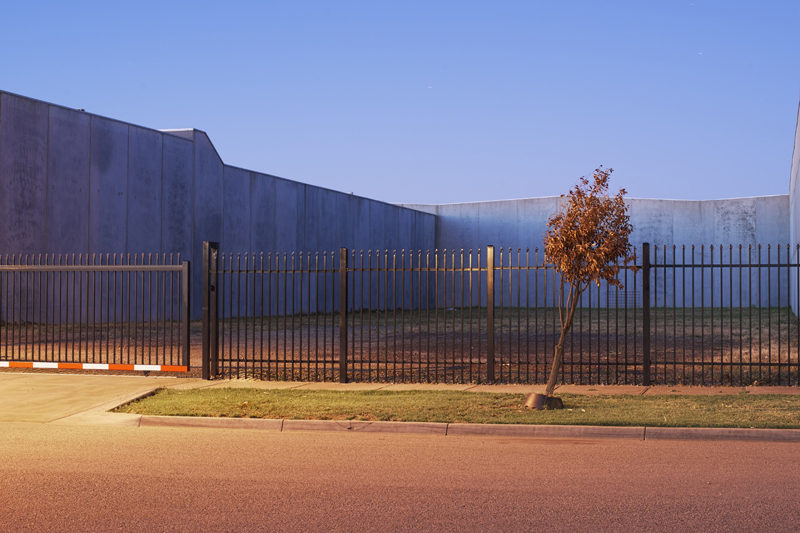
Progress Park
It’s called a business park! “Strategically positioned and master planned” says the developer. But in reality there are dozens of identical places throughout the outer fringe. Not much “master planning” in that is there?
But why call it a park? It’s not like anything I’d call a park? As a kid a park was a place with a playground. But these parks are just empty blocks and lots of concrete slab buildings. Buildings that are impossible to separate when not painted, patterned, planted and/or graffitti-ed (not actually part of the design apparently).
I guess there is a lot of nature in business parks. What with the vast empty paddocks of roughly mown grass, endless rows of evenly spaced bushes, the ever present nature strips, established trees awaiting destruction (or a micro park centrepiece) and the already dead plantings. The combined effect occasionally achieves ironically idyllic. Could the very very controlled plantings of these business parks hint at an underexplored relationship between our culture, nature and “progress”. A repression of the unplanned and unexpected perhaps considered “a key ally in the prosperity of” well … everything.
Progress Park is a photographic exploration of business parks with an eye fixed firmly on their massed plantings, paddocks and weeds. Aesthetically a love child of “New Topographics” and The Situationists (i.e a psychogeography of the social landscape).
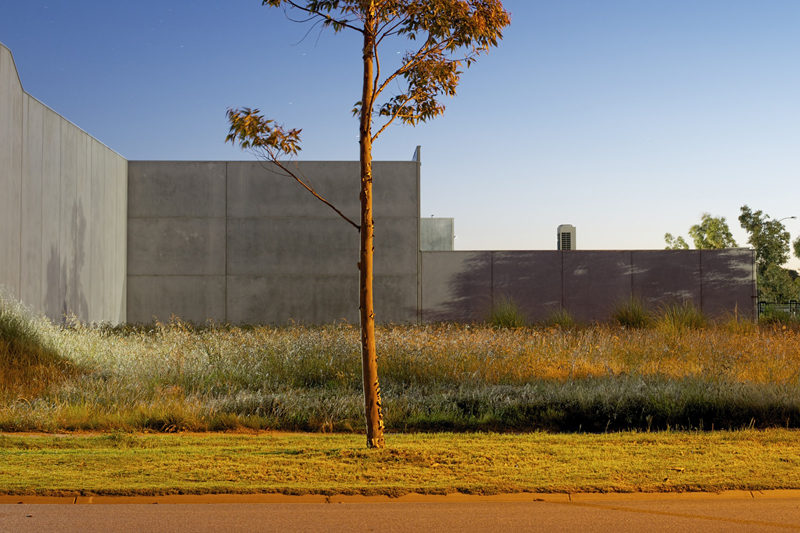

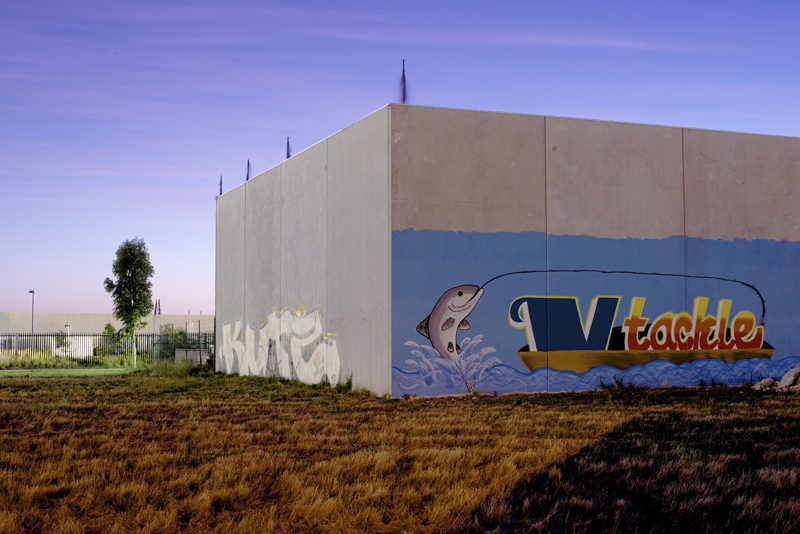

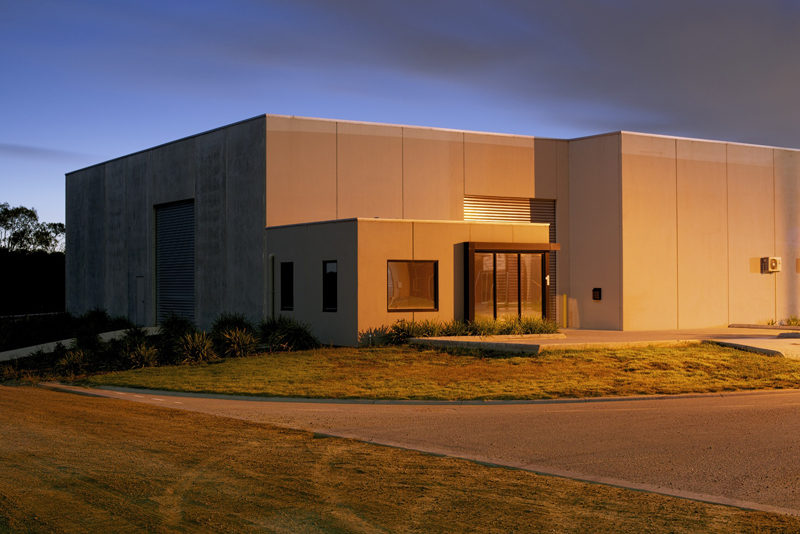
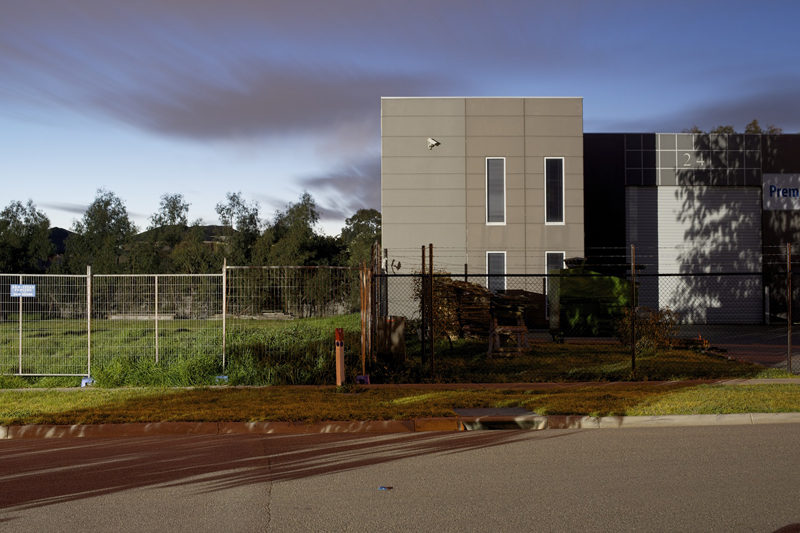
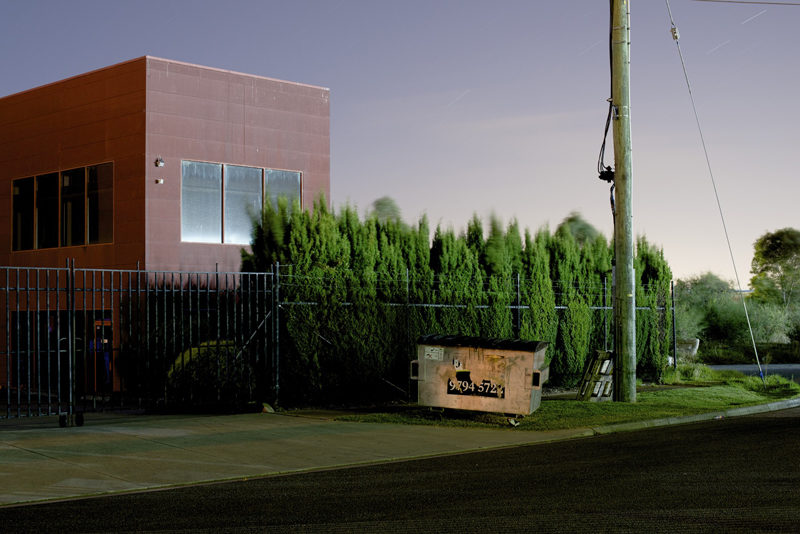

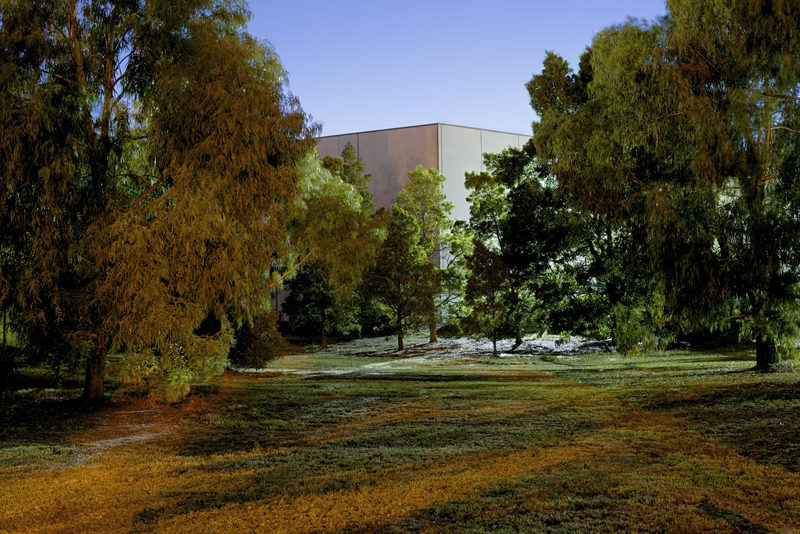



To view more of Bill’s work please visit his website.